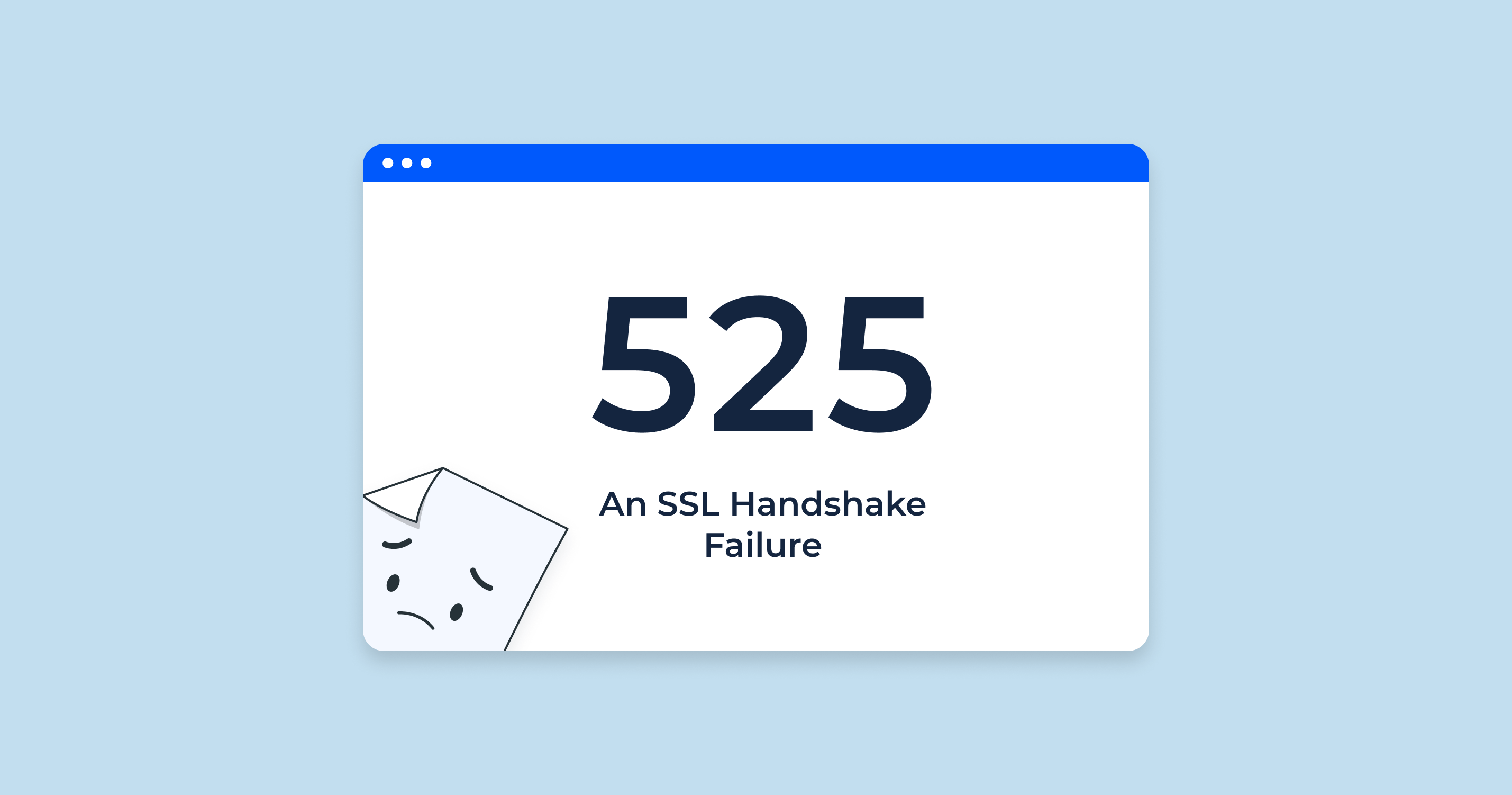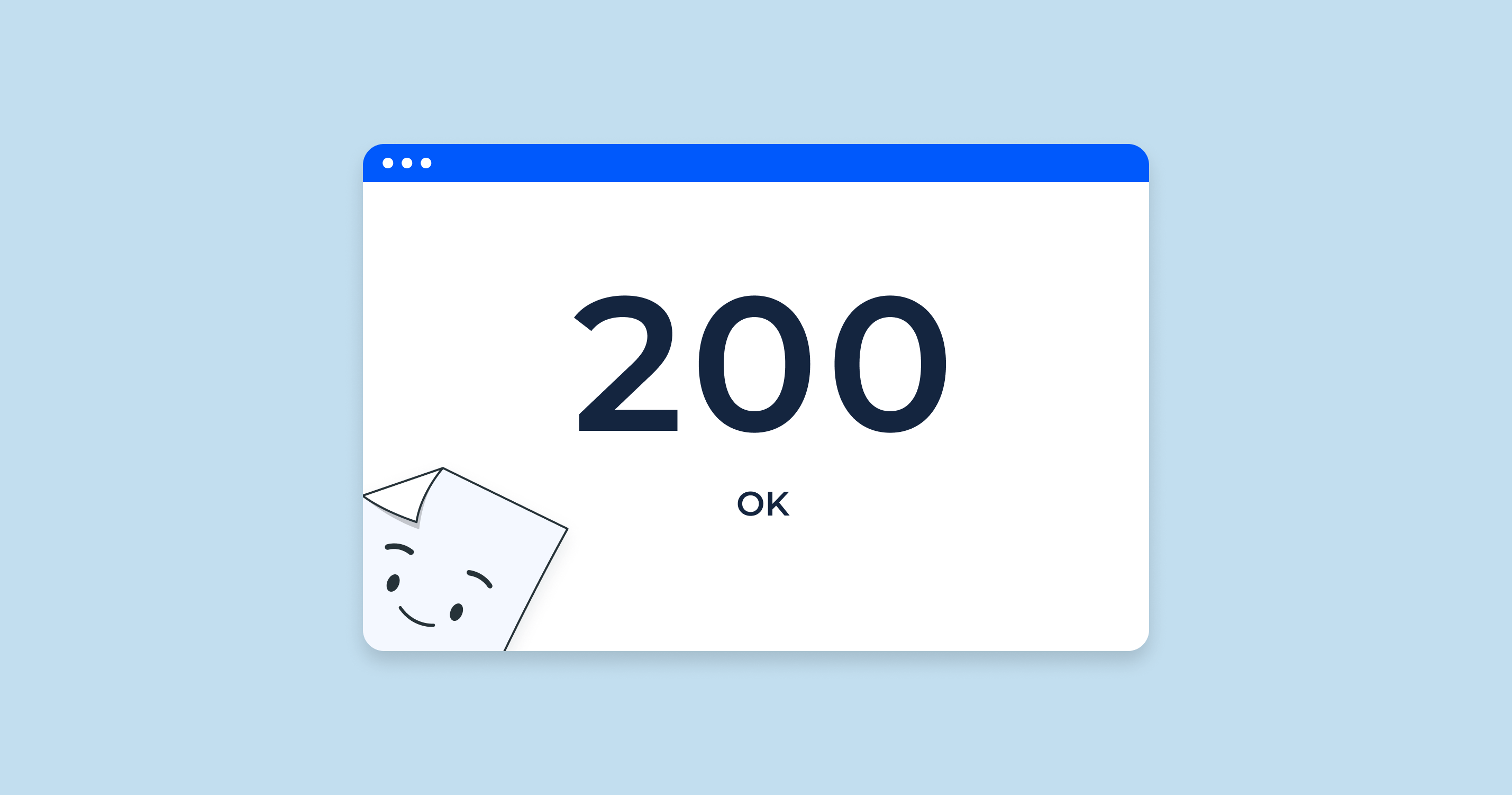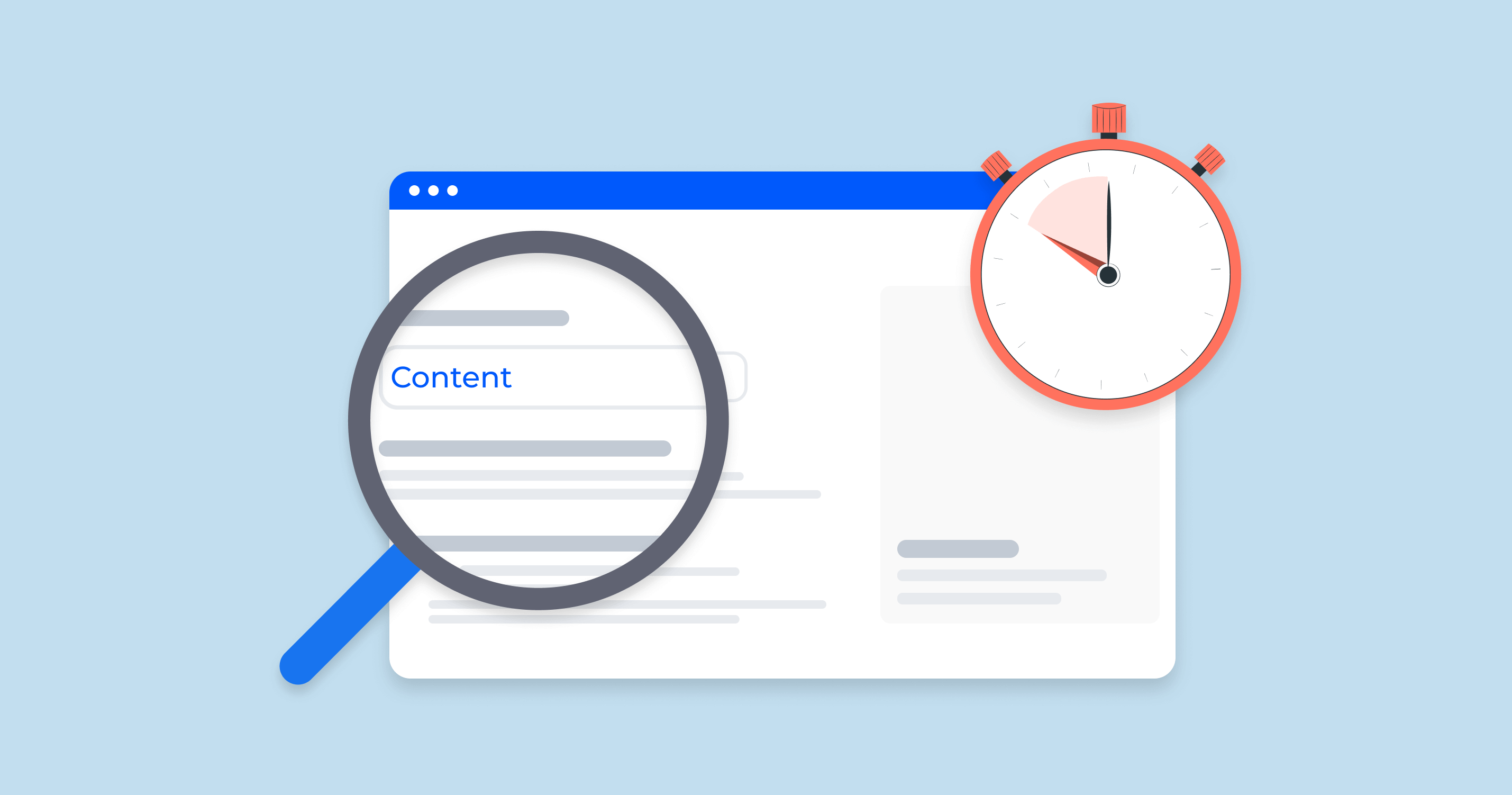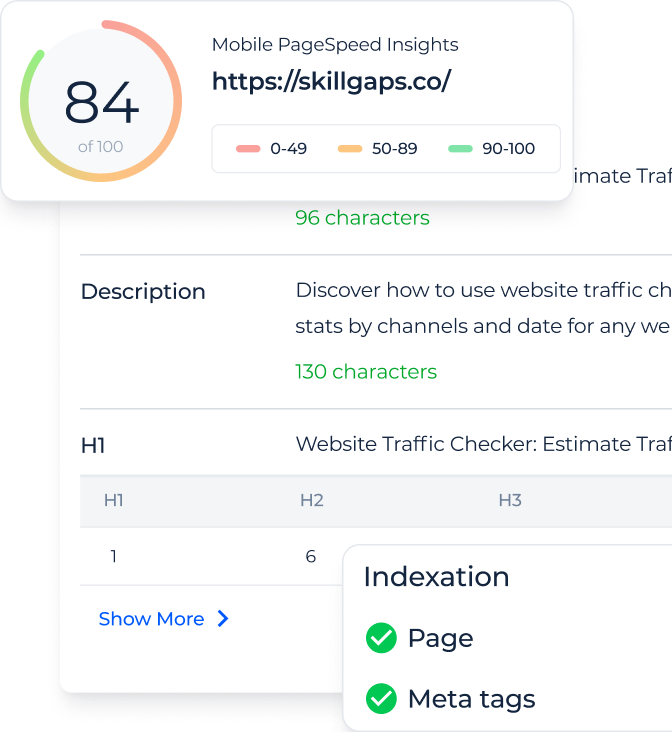What is the 525 HTTP Status Code?
The 525 status code “SSL Handshake Failed” is an HTTP response indicating that the SSL/TLS handshake between the server and client (such as a web browser or cloud service provider) has failed.
When a user tries to access a website over HTTPS, a process called the SSL/TLS handshake takes place. This handshake ensures that the connection between the user’s browser and the server is secure and encrypted. However, if this process encounters problems, the 525 error can occur.
525 Error Impact on Search Engine Ranking
The 525 status code error, or “SSL Handshake Failed” error, can have several implications for SEO, including:
| User Experience (UX) | When users encounter a 525 error, they cannot access the requested content. This leads to a poor user experience, which can increase bounce rates. Search engines like Google factor user experience into their ranking algorithms, so a high bounce rate due to this error can negatively affect search engine rankings. |
| Site Accessibility | Search engine bots crawl and index web pages over HTTPS. If there’s an issue with the SSL handshake, they may be unable to access the site. This can lead to reduced or even complete loss of indexing for the affected pages, causing them to drop in search engine results pages (SERPs). |
| Trust and Security | Modern browsers often warn users when there’s an issue with a site’s SSL certificate. If users are consistently warned about security issues due to a 525 error, they may lose trust in the site. Trust signals are an essential aspect of SEO, as they can influence both user behavior and search engine ranking. |
| Trust and Security | Modern browsers often warn users when there’s an issue with a site’s SSL certificate. If users are consistently warned about security issues due to a 525 error, they may lose trust in the site. Trust signals are an essential aspect of SEO, as they can influence both user behavior and search engine ranking. |
| Site Speed and Performance | Although the 525 error itself may not directly impact site speed, any underlying issues with the server’s SSL configuration that cause the error might also affect site performance. Slow loading times can further impact user experience and SEO rankings. |
| Potential Penalties | If a site consistently serves 525 errors to users and search engines, it may be perceived as having technical issues or being poorly maintained. This could lead to a potential drop in rankings, as search engines prefer to direct users to sites that provide a consistent and secure browsing experience. |
| Temporary vs. Persistent Errors | Occasional 525 errors may not have a significant impact if they are quickly resolved. However, persistent errors that are not addressed may lead to more severe consequences for SEO. |
| Monitoring and Reporting | It’s worth noting that many SEO tools and search engine consoles (such as Google Search Console) may report on 525 errors, allowing webmasters to quickly identify and rectify the issues. |
In summary, the 525 status code error can adversely affect a website’s search engine ranking, user experience, and overall performance. Addressing this error promptly and ensuring that the site’s SSL configuration is correctly implemented is vital for maintaining optimal SEO.
525 Status Code Common Reasons and How to Fix Them
The 525 status code, or “SSL Handshake Failed” error, occurs when the secure connection between a server and client fails. This error can affect both user access and SEO. Below are some common reasons for this error and solutions to fix them:
Incorrect SSL Certificate Configuration
The server might have an incorrect or improperly installed SSL certificate, leading to the 525 error.
Incompatible SSL/TLS Protocols
The server and client (e.g., Cloudflare) might be using incompatible versions of SSL/TLS, causing the handshake to fail.
Expired SSL Certificate
An expired SSL certificate can also cause a 525 status code error.
Firewall or Security Software Interference
Sometimes, a firewall or security software might block or interfere with the SSL handshake process.
Server Downtime or Overload
If the origin server is down or overloaded, it might not be able to handle the SSL handshake, resulting in the 525 error.
Mismatched Cipher Suites
Cipher suites used by the server and client might not match, leading to a failed handshake.
Proxy and CDN Issues
If you’re using a proxy service or CDN like Cloudflare, misconfiguration or compatibility issues might cause the 525 error.
By addressing these common causes, webmasters can effectively diagnose and fix the 525 status code error, thereby maintaining a secure and user-friendly browsing experience.
HTTP Status Code Checker Tool for Identifying HTTP 525 Errors
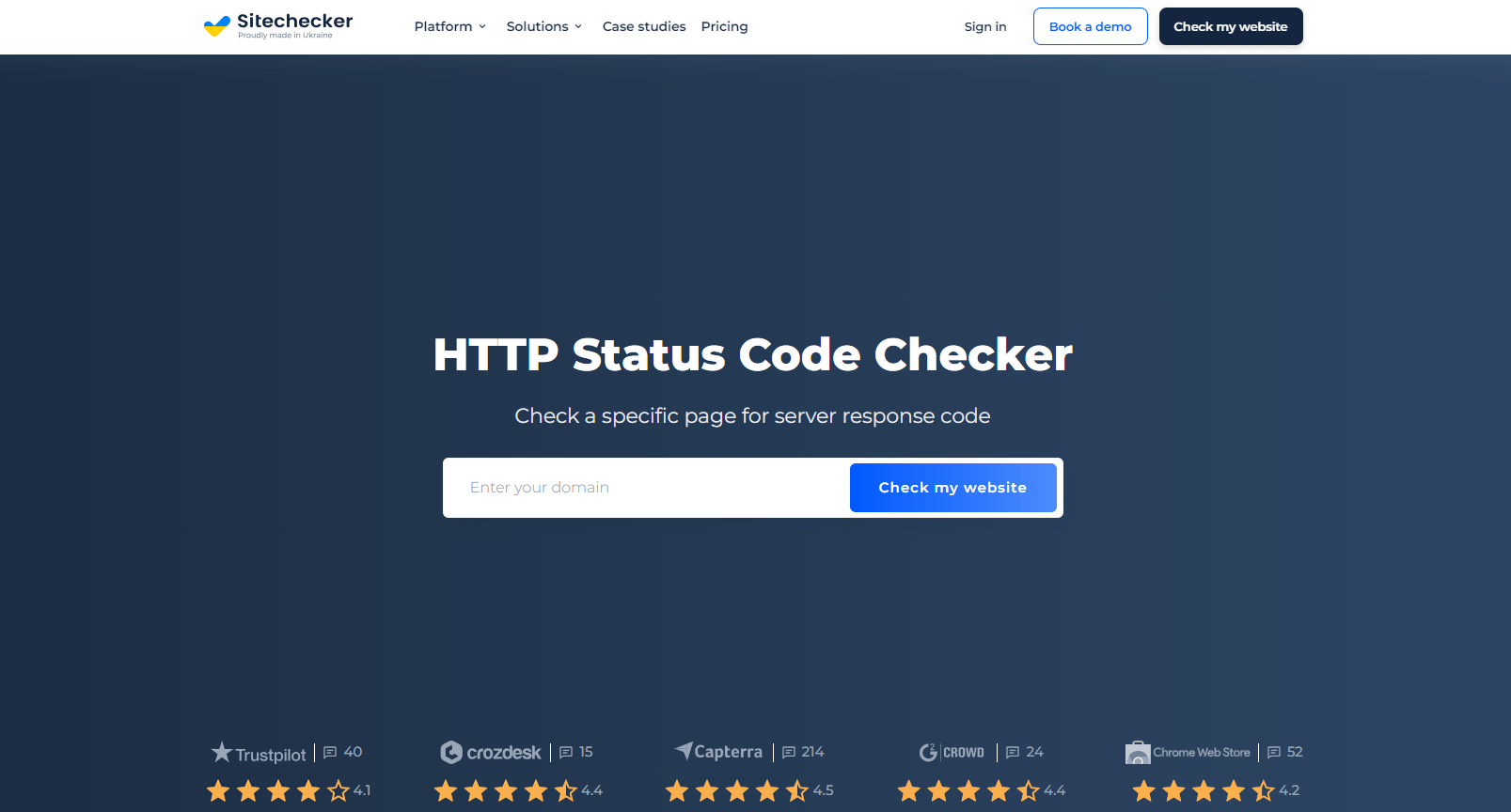
The Sitechecker HTTP Status Code Checker Tool provides a straightforward way to identify 525 Errors on your website. By simply entering the URL of your website, this tool can quickly scan and identify any issues related to HTTP status codes, including the 525 “SSL Handshake Failed” error.
With its user-friendly interface, the tool helps webmasters and SEO professionals detect problems with SSL certificates, configurations, or server compatibility that may lead to the 525 error. It highlights areas that need attention and offers insights into the underlying causes, saving valuable time in diagnosing the problem.
By using the Sitechecker tool, you not only gain a comprehensive understanding of the 525 errors on your site but also have a solid foundation for taking corrective actions. Its ability to pinpoint issues related to the SSL handshake process makes it an essential resource for maintaining a secure and accessible website.
Conclusion
The 525 status code error, known as “SSL Handshake Failed,” has a significant impact on SEO and user experience. It occurs when the SSL/TLS handshake between the server and client fails, leading to problems like increased bounce rates, loss of trust, and potential penalties in search engine rankings.
Various factors can trigger this error, ranging from incorrect SSL configurations to server overload. Solutions include properly installing and maintaining SSL certificates, monitoring server performance, and using compatible SSL/TLS protocols.
Tools like the Sitechecker HTTP Status Code Checker provide a valuable resource for identifying and addressing these errors, ensuring a secure and user-friendly browsing experience.
